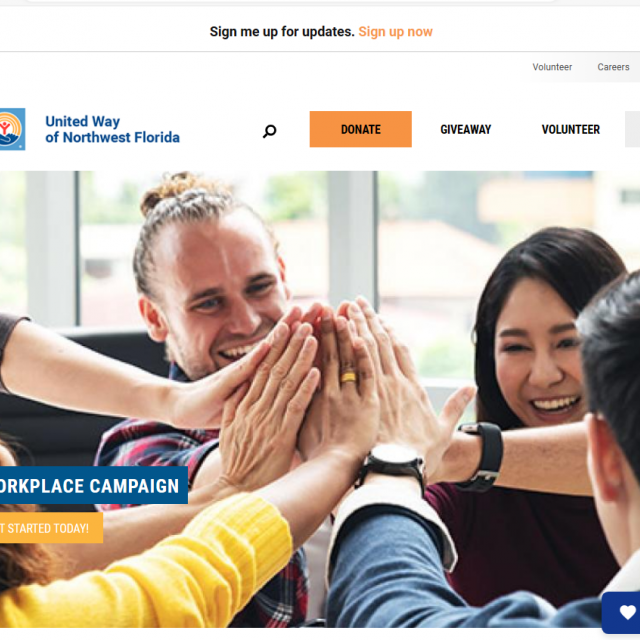
Donor acquisition should be a top priority in your nonprofit’s fundraising strategy. Yes, we understand donor retention and satisfaction are critical to maintain too. Even if you engage with your current donors perfectly and your retention numbers are high, it’s important that you invest in gaining new donors to keep your donor pool healthy and growing. If you don’t invest in donor acquisition, you may see your donor file size shrink and dry up. In this blog, we’ll walk you through some best practices for leveraging your website for donor acquisition. But first, let’s define what we mean by donor acquisition.
Definition of Donor Acquisition
Donor acquisition is the process you take to search, attract, engage, and gain new donors through your various marketing channels, such as direct mail, email, social media, and paid ads, to name a few. The success of donor acquisition campaigns is measured by the number of new donors your nonprofit gains over a set time frame.
Before we dig into how to leverage your website for donor acquisition, let’s dig into creating a donor acquisition plan at a high level. Here are some steps to get you started.
Donor Acquisition Plan Tips
- Determine Donor Acquisition Goal. It’s not enough to say, “We need more new donors.” Make sure you know how many new donors you want to gain. Set the goal so you know how to measure the performance of your donor acquisition campaign efforts.
- Review Current Donor Data. In order to understand what donor acquisition campaigns have worked in the past, it’s important to look at your current donor data such as:
- Demographics: age, profession, education, region
- Channels: open rates, conversion rates, bounce rates
- Donations: campaigns given to, donation amounts, donation frequency
- Campaigns: were goals met (success), were goals not met (failure), topics
- ROI: costs of campaigns, was there a positive/negative ROI, revenue
- Develop Personas and Messaging. Understand who your main donors are and prospective donors. What are the best channels to reach them? What are the messages that appeal to them and compel them to take action?
- Segment Audiences. Create different groups for your donors (giving ranges, one-time vs. monthly giving, lapsed) and your prospects.
- Create Content. Your content should be personalized for the personas and different messaging you’ve created. And the length of content is determined based on the channels you’re using.
- Launch Campaigns. Make sure your campaign is created with SMART (Specific, Measurable, Attainable, Realistic, Timebound) goals and you’ve set up key performance indicators (KPIs) to track.
- Test and Track Performance. Test your different messaging with new audiences you’ve identified and track your KPIs. This will let you know if your donor acquisition plan is performing well or if you need to change a few items to optimize your conversions.
Hopefully, these tips will be helpful to you. Now let’s dive into how to leverage your website for donor acquisition.
Leveraging Your Website For Donor Acquisition
Your nonprofit’s website shouldn’t just be about pushing information out to your community. It should also be the hub where your marketing and fundraising campaigns push people to take action. Here are some examples.
- Email Campaigns. Make sure your email appeals have compelling images, tell a great story, and provide links to valuable content on your website landing pages, such as downloadable eBooks, success stories about your work, and great videos about the people you serve. When people opt into your email outreach, your donor acquisition actions can begin.
- Social Media Campaigns. Everyone knows social media is a great donor acquisition tool where you can engage with prospects by sharing photos, videos, and resources. Why? People want to learn about your nonprofit and your mission before they start donating. Make sure you’re leveraging social media to point people back to landing pages where they can read valuable content, share resources, sign up for fundraising events, donate to causes they care about most, subscribe to e-newsletters, and download educational resources.
- Donor Surveys. Does your nonprofit know why some of your donors continue to donate? Or why do some donors stop donating? Creating a survey and simply asking may shed some good light in these areas. A great way to get this feedback is to create survey landing pages on your website with specific questions for the two separate groups: current donors and lapsed donors. People that support (or have supported in the past) will more than likely appreciate being asked their opinion. This valuable feedback will help you in your donor acquisition strategies and the creation of messaging.
- Optimized Landing Pages. You want to ensure that your website visitors are engaged with your landing pages right away. And you’ll want to make sure they can navigate easily through your content on whatever device they are using - no one wants to hunt and peck for the information they need, or pinch and zoom to read it.
- Search Engine Optimization (SEO). SEO is a process to increase your visitors to your website. How? By ensuring your website appears at the top of a list from a website search. Your nonprofit can drive traffic from these search results to your website by using keywords that rank well in your content.
- Online Advertising (Digital Ads). Although this tactic costs money, when done well the payoff is worth it. Advertising your nonprofit’s causes will attract people to your website where you can tell them your mission and compelling stories.
- Other Landing Pages To Consider. The examples above or just a handful of ways to leverage your website for donor acquisition. Here’s a list of other landing pages you could look into and consider too:
- Press Releases
- In The News
- Photo Gallery
- Signup Page
- Questionnaires
- Blogs
- Show what donations are used for
Make It Easy To Donate
Okay, we agree, this is a bit obvious. But it’s really important to make it easy for prospective donors – and current donors – to donate to your nonprofit. Your website should have these items in place for your donor acquisition:
- A “Donate” button featured prominently.
- A donation page that is easy to find, compelling, and appealing.
- Levels of donation ranges, and if applicable, the benefits of each.
- Suggested giving levels for different campaigns or causes.
- A responsive website that is easy to navigate from any device.
- Your nonprofit’s Charity Navigator or GuideStar rating - they help with credibility.
We Can Help
The OneEach team has been working with nonprofits for over 20 years. We know and understand the challenges you face when it comes to your donor acquisition strategy. And we can help! Contact Us today to learn how to leverage your website for donor acquisition.





